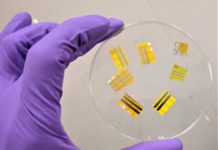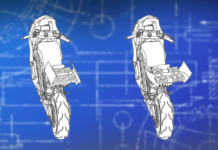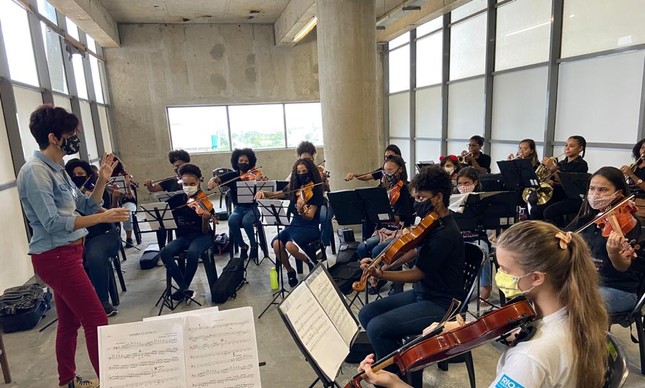Nova Zelândia está prestes a testar o “sonho” de Nikola Tesla: transmitir energia sem fios
Nikola Tesla foi um grande inventor nos campos da engenharia mecânica e da eletrotécnica. As suas experiências foram conduzidas no Colorado, Estados Unidos, com transmissão de energia sem fios levaram a uma das suas propostas mais ousadas: alimentar o mundo com energia sem fios.
Na ocasião, Tesla fez manchetes com os seus planos para um “sistema sem fios mundial” e ganhou financiamento do JP Morgan para construir a primeira de várias gigantes torres de transmissão de energia sem fio.
Entretanto, o sonho da energia sem fios de Tesla morreu pouco depois: JP Morgan cancelou financiamento adicional e a torre foi por tanto demolida.
Cientistas posteriores ficaram céticos sobre se os planos de Tesla – que eram vagos – teriam funcionado.
O colega de Tesla, Guglielmo Marconi, tinha um sonho paralelo com muito maior sucesso: a transmissão sem fios de informações em ondas de rádio. O mundo de hoje está abastecido de informações sem fios.
Agora, a startup Emrod da Nova Zelândia pode conseguir fundir estes dois sonhos. A empresa está construindo um sistema para transmitir energia sem fios a longas distâncias. De acordo com o Singularity Hub, a Emrod recebeu financiamento da Powerco, a segunda maior concessionária da Nova Zelândia, para realizar testes do seu sistema numa estação de energia comercial conectada à rede.
A empresa pretende levar energia a comunidades distantes da rede ou transmitir energia de fontes renováveis remotas, como parques eólicos offshore por exemplo.
O sistema consiste em quatro componentes: uma fonte de energia, uma antena transmissora, vários relés transmissores e uma retena. Uma retena é uma antena retificadora, uma antena usada para converter microondas em energia CC. Como uma antena se refere a qualquer tipo de dispositivo que converte ondas eletromagnéticas em eletricidade ou vice-versa, uma retena é simplesmente uma antena de microondas, em contraste com as onipresentes antenas de rádio e TV.
A antena transmissora transforma eletricidade em energia de microondas – uma onda eletromagnética como as ondas de rádio de Marconi, mas mais energética – e concentra-a num feixe cilíndrico. O feixe de microondas é enviado por uma série de relés até atingir a retena, que o converte novamente em eletricidade.
Emrod está usando energia na área industrial, científica e médica e mantem a densidade de energia baixa. “Não se trata apenas de quanta potência se fornece, é quanta potência se fornece por metro quadrado”, disse Greg Kushnir, fundador da Emrod, em declarações ao New Atlas. “Os níveis de densidade que estamos usando são relativamente baixos. No momento, é o equivalente a ficar do lado de fora ao meio-dia ao sol, cerca de 1 kW por metro quadrado”.
Se funcionar conforme se espera, o feixe nunca entrará em contato com nada além do ar. O sistema usa uma rede de lasers ao redor do feixe para detectar obstruções, como pássaros ou pessoas, e desliga automaticamente a transmissão até que a obstrução passe.
A tecnologia de transmissão de energia via energia de microondas existe há décadas. Porém, para torná-la comercialmente viável, é necessário minimizar as perdas de energia. Kushnir disse que os metamateriais desenvolvidos nos últimos anos são os que fazem a diferença.
A empresa usa metamateriais para converter com mais eficiência o feixe de microondas em eletricidade. Os relés, que são como “lentes” que estendem o feixe além da linha de visão ao refocalizá-lo, quase não têm perdas. A maior parte das perdas ocorre na outra ponta, onde a eletricidade é convertida em energia de microondas.
A eficiência do sistema é de cerca de 70% e é economicamente viável em algumas áreas.
“Não prevemos num futuro próximo uma situação em que poderíamos dizer que todos os fios de cobre podem ser substituídos por wireless”, disse Kushnir. “Inerentemente, terá níveis de eficiência mais baixos que o esperado. Não se trata de substituir toda a infraestrutura, mas aumentá-la em lugares onde faz sentido.”
O protótipo da empresa consegue atualmente enviar alguns watts de energia a uma distância de cerca de 40 metros.
No projeto Powerco, estão trabalhando numa escala maior, capaz de transmitir alguns quilowatts. O plano é entregar o novo sistema à Powerco em outubro, testá-lo no laboratório durante alguns meses e, se tudo correr conforme o desejado, testá-lo em campo. Os testes terão como objetivo validar quanta potência o sistema pode transmitir e sua distância de alcance.
“Podemos usar exatamente a mesma tecnologia para transmitir 100 vezes mais potência em distâncias muito maiores”, disse Kushnir, em comunicado à imprensa. “Os sistemas sem fios que usam a tecnologia Emrod podem transmitir qualquer quantidade de energia que as soluções com fio transmitem.”
Ray Simpkin, diretor de pesquisa da Emrod, disse ao IEEE Spectrum, que a empresa pesquisando se conseguiria enviar energia por 30 quilômetros de distância, da Nova Zelândia à Ilha Stewart. O sistema pode custar até 60% de um cabo submarino, salientou.
Esta tecnologia pode ajudar áreas rurais, transmitir energia de parques eólicos offshore ou ser usado para fornecer energia após desastres naturais em que a infraestruturas físicas tenham sido danificadas.
A tecnologia da Emrod não é o “sistema sem fios mundial” da Tesla, mas pode tornar a energia sem fio de longa distância uma realidade comercial em um futuro não muito distante.
Achou útil essa informação? Compartilhe com seus amigos!
Deixe-nos a sua opinião aqui nos comentários.
















